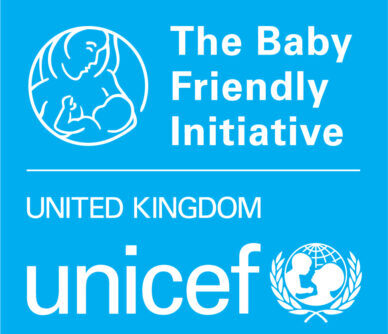The latest bed-sharing research is outlined here. For guidance on discussing co-sleeping with parents, read our Co-Sleeping and SIDS: A Guide for Health Professionals leaflet.
Safer sleep guidance for maternity healthcare professionals
This guidance by the Royal College of Midwives shares key messages on safer sleep and advocates for clear and tailored advice on how to reduce Sudden Unexpected Death in Infancy (SUDI) to be given to all carers and maternity support workers. It includes information about the importance of a clear, flat, uncluttered sleeping space for the baby in their parents’ bedroom; information about how to avoid overheating and about the risks of ‘overlying’ when sharing a sleep space with a baby, particularly when sharing a sofa.
Royal College of Midwives. 2021. Safer sleep guidance for maternity healthcare professionals
Baby-box schemes in England: parent and practitioner experiences, and recommendations
This 2020 study concludes that whilst many assumptions exist about the origins and purpose of baby-boxes; this misinformation needs correcting, especially as it relates to infant death reduction and safe infant sleep. Baby-box schemes take multiple forms from those motivated by social welfare to those motivated by commercial profit. The English experience of partnership schemes between healthcare facilities and commercial box-providers reveals some success stories, along with multiple points of ambiguity, unanticipated difficulty, and concerns for infant safety.
Trends in Breastfeeding Interventions, Skin-to-Skin Care, and Sudden Infant Death in the First 6 Days after Birth
This study aimed to determine if the implementation of skin-to-skin care and the Baby-Friendly Hospital Initiative (BFHI) contribute to sudden unexpected infant death (SUID) and asphyxia in the first 6 days after birth. Findings were based on data from the Centers for Disease Control and Prevention (CDC), CDC WONDER and the Massachusetts Department of Public Health. Data related to the implementation of BFHI from 2004-2016, rates of skin-to-skin from 2007-2015 and rates of SUID and asphyxia from 2004-2016 were used, allowing researchers to find a temporal association between the increase of breastfeeding initiatives and skin-to-skin care with the decreasing occurrence of SUID. This study took place in America but has relevance in the UK.
Bedsharing and Breastfeeding: The Academy of Breastfeeding Medicine Protocol
New guidelines for health professionals released by the Academy of Breastfeeding Medicine explored safe bedsharing for infants who are being breastfed. The authors call for a greater discussion on the evidence-based benefits and risks of both bedsharing and separate sleeping in the postnatal period, warning that accidental bedsharing can ultimately be more dangerous than when conducted intentionally in a safe environment. This is an American protocol but has relevance in the UK. Recommendations highlight that health professionals must take into account the mothers’ knowledge, beliefs and preferences and acknowledge the known benefits and risks of bedsharing.
An Integrated Analysis of Maternal-Infant Sleep, Breastfeeding, and Sudden Infant Death Syndrome Research Supporting a Balanced Discourse
This integrated analysis reviewed research on breastfeeding and maternal and infant sleep, considering where we are in safeguarding both infant lives and breastfeeding, and how to improve our knowledge and inform policy and practice. The authors found that many breastfeeding mothers and caregivers do sleep with their infants whether intentionally or unintentionally. They argue that the data supports policies to counsel parents and caregivers on safe sleep practices, including bed-sharing in non-hazardous circumstances, particularly in the absence of parental smoking, recent parental alcohol consumption, or sleeping next to an adult on a sofa. Further research with appropriate methodology is needed to drill down on actual rates of infant deaths, paying close attention to the definitions of deaths, the circumstances of the deaths, and confounding factors, in order to ensure we have the best information with which to derive public health policy. Introduction and use of the concept of “breastsleeping” is a plausible way to remove the negative connotations of “co-sleeping” and redirect ongoing data-driven discussions and education of best practices of breastfeeding and sleep.
Older research
- The Atlantic Divide: Contrasting U.K. and U.S. Recommendations on Cosleeping and Bed-Sharing
- Duration of Breastfeeding and Risk of SIDS: An Individual Participant Data Meta-analysis
- Who bed-shares and what is the relationship with breastfeeding duration?
- SIDS and infant sleep ecology
- Bed-sharing in the absence of hazardous circumstances



